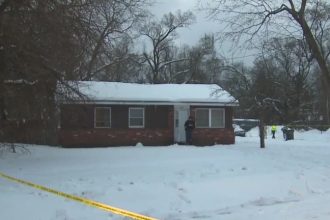Saniyah Cheatham Found Unresponsive in NYPD Custody, Community in Bronx Seeks Answers
BRONX, NY — Saniyah Cheatham, an 18-year-old Bronx resident, tragically lost her life while in police custody during the early hours of Saturday morning, July 5, according to official reports from the New York Police Department (NYPD). The incident occurred at the 41st Precinct station house in the Hunts Point neighborhood of the Bronx, an area known both for its close-knit community and its industrial character.
According to NYPD statements, Saniyah Cheatham was discovered unresponsive in her holding cell around 12:40 a.m. Officers immediately began performing cardiopulmonary resuscitation (CPR) while simultaneously contacting emergency medical services. She was then transported to Lincoln Hospital, a major medical facility in the South Bronx, where she was pronounced deceased shortly after arrival.
The young woman had been taken into custody earlier that same evening following what authorities described as a physical altercation. Details surrounding the nature of that incident remain limited, with officials confirming only that she was arrested in connection with a fight.
Only hours before her untimely passing, photos and videos shared on social media had shown her enjoying an Independence Day cookout at Crotona Park, a familiar community gathering spot in the Bronx. Friends and family members captured images of her smiling, dancing, and celebrating the holiday, making the suddenness of her death all the more difficult for loved ones to comprehend.
Community Grief and Unanswered Questions
The Bronx community, particularly those residing near Crotona Park and Hunts Point, has reacted with heartbreak and growing concern. Saniyah Cheatham’s passing has sparked an outpouring of emotion on social media platforms and in public forums across the borough.
In a deeply moving message shared via Facebook, her mother, Thomasina Cheatham, expressed her grief and requested prayers for her daughter’s memory. Describing her as a “precious princess,” the post resonated with hundreds of others who responded with messages of support and condolences.
Community members have expressed a mixture of sorrow and frustration. Some have gathered in informal vigils outside the 41st Precinct building, leaving candles, flowers, and handwritten notes asking for justice and transparency regarding what happened inside that cell early Saturday morning.
Investigation Underway
The NYPD confirmed that its Force Investigation Division, a specialized internal unit tasked with reviewing incidents involving serious injury or loss of life while in police custody, is leading the inquiry into Saniyah Cheatham’s death.
While preliminary reports have been circulated, including a statement from The New York Times suggesting that she may have died by suicide using her sweater as a ligature, NYPD officials have not yet confirmed this information publicly.
As part of standard procedure, the Office of the Chief Medical Examiner is conducting a full post-mortem examination, including toxicology testing. The official cause and manner of death had not been released as of early this week, leaving many in the community waiting for clarity.
It is also expected that video surveillance footage from inside the precinct, including footage from within or near the holding cells, will be reviewed as part of the investigation. Standard NYPD policy requires precincts to maintain security cameras in key areas, although questions remain regarding how frequently detainees are monitored by officers in person.
Standard Custody Protocols Under Scrutiny
The incident has drawn renewed attention to NYPD protocols surrounding detainee monitoring. In situations where individuals are placed in holding cells, especially overnight, officers are required to conduct regular welfare checks to ensure the safety and health of those in custody.
In cases where a detainee may be intoxicated, injured, or showing signs of mental distress, these checks are generally performed more frequently. Whether these protocols were properly followed in this instance has not yet been determined, and is likely to become a focal point of both the internal NYPD investigation and any external reviews.
Civil rights advocates and legal experts familiar with custodial care policies have emphasized that agencies must take proactive measures to prevent harm to individuals in their care. This includes removing potentially dangerous items, such as belts or sweaters, that could be used for self-harm, particularly if there are any signs that a person might be in distress.
Broader Context: Custodial Deaths and Public Trust
Saniyah Cheatham’s passing is not occurring in isolation. Across New York City and nationally, similar incidents involving individuals dying while in police custody have sparked public outcry, lawsuits, and calls for reform.
In the Bronx specifically, where communities have long expressed concerns about police practices, incidents like this amplify existing tensions. Leaders from organizations such as the Bronx Defenders and community advocacy groups have already issued statements urging a transparent investigation and accountability.
Trust between law enforcement and communities of color, particularly Black and Latino residents, remains a critical issue in Hunts Point and surrounding neighborhoods. Events such as these often reinforce a sense of vulnerability among young people and their families.
Remembering Saniyah Cheatham
Beyond the procedural and policy questions, many Bronx residents simply want to remember Saniyah Cheatham as a vibrant, joyful young woman whose life was cut short too soon.
Those who knew her described her as outgoing, always smiling, and known for her energetic spirit. Family friends who gathered at Crotona Park following news of her passing recalled her dancing and laughing at the Independence Day cookout just hours before she was taken into custody.
A close family friend described her as someone who “lit up a room whenever she walked in.” Another neighbor from her apartment building in the Bronx said that Saniyah had recently spoken about pursuing her high school diploma and planning to work toward a future career.
Legal and Policy Implications
In addition to the NYPD’s internal review, there is a possibility that independent oversight agencies such as the New York City Civilian Complaint Review Board (CCRB) or the New York State Attorney General’s Office may become involved in evaluating the circumstances surrounding Saniyah Cheatham’s death.
Legal observers have noted that in-custody deaths often lead to civil litigation, especially when questions arise about whether proper procedures were followed. The family may eventually pursue legal action, although no official statements regarding such plans have been made at this time.
NYPD’s Public Statement
The NYPD has made only limited public comments beyond confirming basic facts and the involvement of its Force Investigation Division. In an official release, a spokesperson stated:
“We are fully committed to conducting a thorough and transparent investigation into the events leading to this incident. Our thoughts remain with the family and loved ones of the individual involved.”
While some community members have expressed skepticism, others hope that a comprehensive and honest review will provide both answers and a measure of closure for Saniyah Cheatham’s grieving family.
Next Steps in the Investigation
As of now, investigators will focus on several key elements:
- Reviewing surveillance footage from inside the precinct building.
- Interviewing all officers and civilian employees who were on duty at the 41st Precinct on the night of July 4 into the early hours of July 5.
- Analyzing physical evidence from the holding cell.
- Obtaining final autopsy and toxicology reports from the Office of the Chief Medical Examiner.
- Determining whether standard NYPD detainee monitoring protocols were followed correctly.
Public updates are expected once these steps are completed, although exact timelines have not been provided.
Community Reflection and Calls for Change
In the days following the incident, local community leaders have emphasized the need for systemic reform regarding how police departments handle detainee welfare.
One Bronx councilmember issued a statement calling for mandatory mental health screenings for all individuals taken into custody, along with increased funding for mental health crisis response teams that can be dispatched to precincts when needed.
Advocates also highlighted the importance of transparency and communication with families affected by in-custody deaths. Too often, they say, families are left in the dark for days or even weeks as investigations proceed without clear updates.
Final Thoughts
The Bronx community now faces the painful task of mourning a young life while also seeking clarity and accountability. Saniyah Cheatham’s passing leaves behind not just her family but countless friends, neighbors, and peers who are grappling with grief and unanswered questions.
Her memory will no doubt remain present in the hearts of those who knew her best as the investigation continues to unfold. For many in the Bronx, this incident serves as yet another reminder of the urgent need for compassion, transparency, and reform in custodial care practices citywide.




